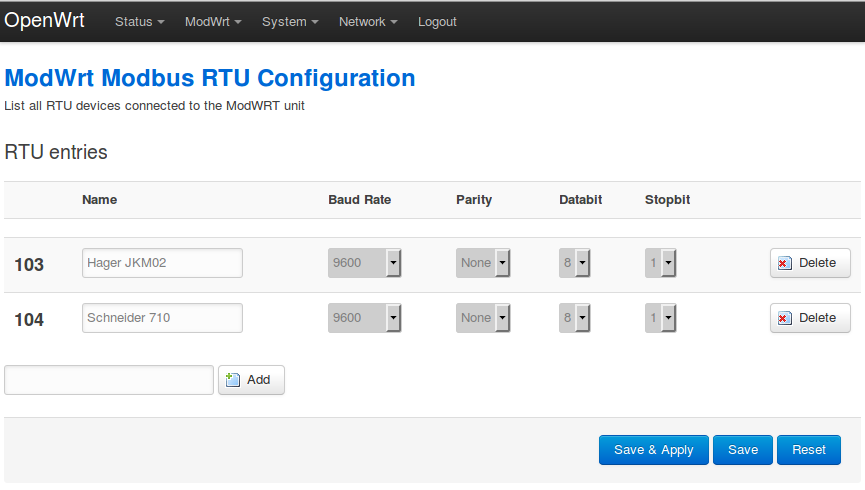Modwrt Web Interface
The ModWRT web interface is build within the OpenWRT web interface.
There are three main functional area which are:
1/ RTU's definitions
2/ Servers definitions
3/ Dataflow configuration (ie which data goes where).
This is for version 1.1.0. See here for version 1.0.0.
1. General
polling interval is how often data are polled from the RTU's and sent.
debug enables more background information in the logs.
2. RTU definition
All Modbus RTU devices can be configured on one single page using Slave ID and communication parameters (baud rate etc).
3. Streams definition
Internet of Thing (iot) servers can be configured on this page.

Name: Server identification name.
Type: Type of target server. Can be one of Emoncms, Thingspeak or InitialState.
Hostname: Hostname or IP address of the server. Can be local or on www.
Apikey: APikey for identification with target server.
4. Dataflow Configuration
This page will configure all dataflow combination.
A single dataflow can query different RTU unit to send combined data onto a single export.

Queries
Name: A name relevant to the user to identify the query.
Group: Detremine to which group the query belongs. All queries of the same group will be sent together to a stream.
Rtu: The RTU ID defined previously.
Datatype: The datatype to interpret the receiving data. Must be one of int, float, floatABCD, floatDCBA, floatCDAB, floatBADC.
Register: Starting register on the RTU unit for the requested data. Note the length is managed by previous field datatype. Decimal format required.
Groups
Enabled: Enable/Disable the dataflow.
Stream: A list of stream to send the query group to.
5. Logs
Revelant debugging information will be shown here if debug has been enabled on the General page.
Page must be refreshed to see the lastest entries.
